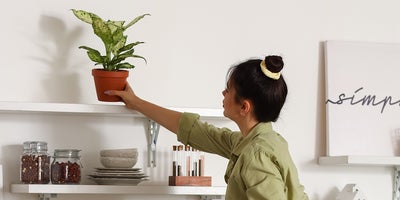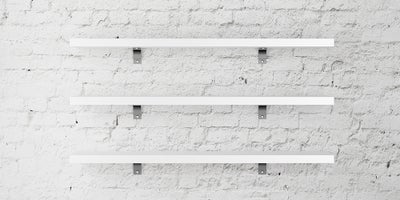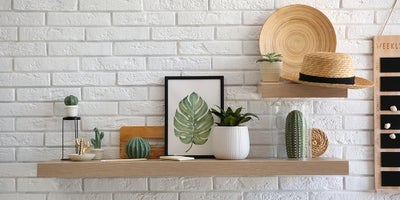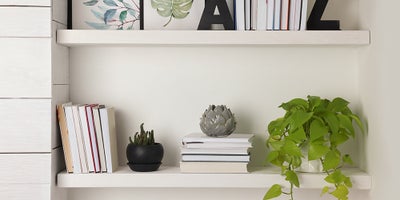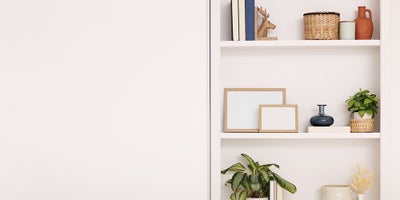Layer: A shelf filled with items that are all the same height and depth can end up looking a bit boring and uninspired. This is why it’s great to choose objects and trinkets that all have vastly different sizes. Place the larger items at the back, like an A4 print in an ornate frame or a large potted plant, and layer smaller objects in front of it like candles or trinket bowls. You can also use books to help add height to your shelf by lying them flat to create a platform for something else to sit on top of.
Balance: Even if you do have a variety of shapes and sizes, you don’t want to put everything small on the top and everything large on the bottom. You also don’t want the large objects all slap-bang in the middle of each shelf as that would look unnatural. Your shelves will look best if you spread these objects around, and the best way to do this is by arranging them in a zig-zag shape running from the top to the bottom.
